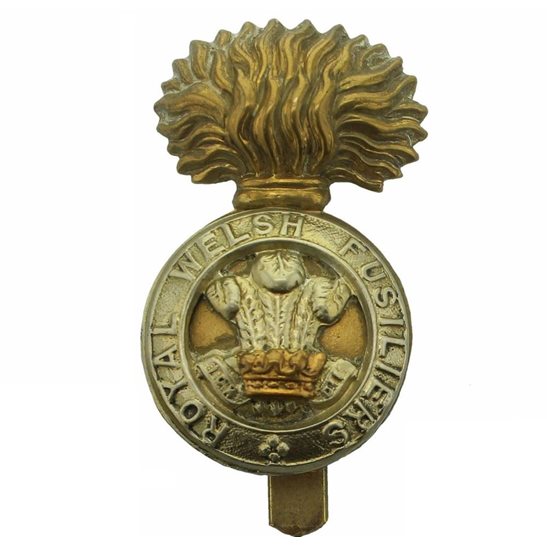Personal Details
Born: 26 February 1899 in Cheswardine, Shropshire and baptised 24 December the same year in Cheswardine Parish Church.
Family: He was the eldest of five children born to John Vaughan Parry, a police constable, and his wife Mary Maria. He married Florrie Powell in 1926 in Whitchurch, Shropshire; no children can be traced for this marriage.
Residence: In 1901 he lived in Sowdley, Cheswardine, Market Drayton, Shropshire; by 1911 the family had moved to 23 Claypit Street, Whitchurch, the address shown on the 1919 Absent Voters’ Register. In 1939, now married, he was living at 97 Alkington Road, Whitchurch which was his address at the time of his death.
Employment: In 1911 he was a school newsboy; in 1939 his occupation was hand compositor.
Died: 27 July 1984 at the Whitchurch Cottage Hospital, aged 85, and was buried on 31 July the same year in Whitchurch cemetery.
Military Details
Regiment: Royal Welsh Fusiliers (previously Cheshire Regiment)
Rank: Private
Service Number: 94885 (previously 67634)
Date of Enlistment: Not known
Date of Discharge: Not known
Reason for Discharge: Not known
Richard was awarded the Campaign Medals (British War Medal, and Victory Medal)

The British War Medal (also known as 'Squeak') was a silver or bronze medal awarded to officers and men of the British and Imperial Forces who either entered a theatre of war or entered service overseas between 5th August 1914 and 11th November 1918 inclusive. This was later extended to services in Russia, Siberia and some other areas in 1919 and 1920. Approximately 6.5 million British War Medals were issued. Approximately 6.4 million of these were the silver versions of this medal. Around 110,000 of a bronze version were issued mainly to Chinese, Maltese and Indian Labour Corps. The front (obv or obverse) of the medal depicts the head of George V. The recipient's service number, rank, name and unit was impressed on the rim.
The Allied Victory Medal (also known as 'Wilfred') was issued by each of the allies. It was decided that each of the allies should each issue their own bronze victory medal with a similar design, similar equivalent wording and identical ribbon. The British medal was designed by W. McMillan. The front depicts a winged classical figure representing victory. Approximately 5.7 million victory medals were issued. Interestingly, eligibility for this medal was more restrictive and not everyone who received the British War Medal ('Squeak') also received the Victory Medal ('Wilfred'). However, in general, all recipients of 'Wilfred' also received 'Squeak' and all recipients of The 1914 Star or The 1914/1915 Star (also known as 'Pip') also received both 'Squeak' and 'Wilfred'. The recipient's service number, rank, name and unit was impressed on the rim.

